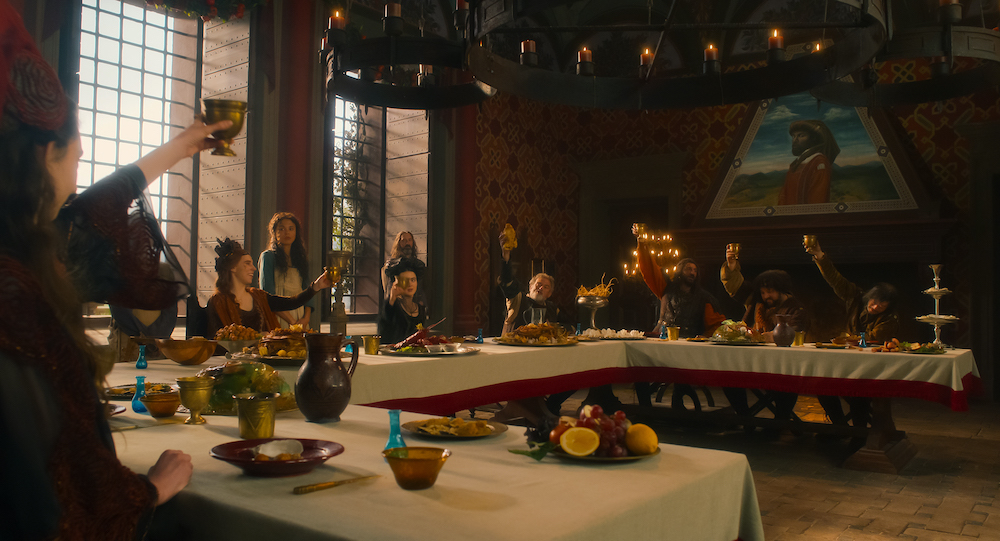Netflix’s ‘The Decameron’ presents an intriguing tale of ten people whose paths cross when they all end up in the same villa while the plague rages outside. These people are a mix of nobles and their servants, each with problems of their own and trying to find a way out by finding the solution within the confines of the villa. All ten residents of the place, Villa Santa, spend the next few days together, familiarising themselves and being cautious. As the challenges mount with each day, the need for survival takes over, and the residents are ready to do whatever it takes to save themselves. But how does the show’s title play into this? What relevance does it have with the show? SPOILERS AHEAD
The Netflix Series Borrows Its Name From the Book
‘The Decameron’ is based on the book of the same name by Italian author Giovanni Boccaccio, who wrote it in the aftermath of the bubonic plague, which is when the story of the Netflix series is set. Considered one of his most renowned works, which influenced several other writers and their works in the coming centuries, ‘The Decameron’ follows seven women and three men of nobility who retreat into a villa during the plague. They intend to spend fourteen days in each other’s company and devise a system to entertain themselves.

Each day, one of them will be appointed the king or queen of the villa and free to choose any theme. Based on that theme, each person will have to tell a story. This means that each day, they would share ten stories within themselves. Two days each week are reserved for attending to personal and religious duties, meaning there are ten days over which a hundred stories are told in the two weeks they spend together. The title of the book keeps this structure in mind. The pattern of ten friends, ten stories, and ten days also seeps into the title, as “deca” represents ten.
Considering all this, it makes sense that Boccaccio chose something like ‘The Decameron’ as the title of his book. In adapting the book, the TV show also borrows the title and the names of several characters, like Filomena, Pampinea, Dioneo, and Panfilo. The show also stays in touch with the themes in the stories in Boccaccio’s book. However, when it comes to telling the story, the show takes its own path but sticks to the pattern of ten.
The Title Refers to the Days and the Number of Characters in the Show
Even if you remove the book from the equation and view the events purely from the point of view of the TV show, the title, ‘The Decameron,’ still makes sense. So much happens within the eight episodes of the show that it might be easy to lose track of time, which makes it seem like the story has been going on for months when it ends within the time frame similar to the one adopted by Boccaccio for his book.

The events in the Netflix series unfold over the course of ten days, starting from the first day of the arrival of the guests and ending when the survivors leave the villa and venture out in the open. The first and second episodes chalk up to about 3-4 days. Still, after that, almost every episode covers the span of one day and one night, especially as the characters and their stories start to diverge and take up more space of their own, leading the audience to spend more time with individual characters rather than deal with them in a group.
The speed of the days slows, particularly in the last two episodes, where too much happens too quickly, and there is little time to process everything. Still, it all rounds up to about ten days, which justifies the use of “Decameron” in the title. In the same vein, while the show changes up several characters from the books, the core still consists of ten characters, with each of their stories presenting a different point of view to the audience.
Read More: The Decameron: Is the Netflix Show Inspired By a True Story?


You must be logged in to post a comment.